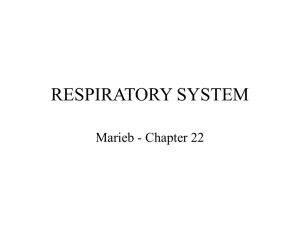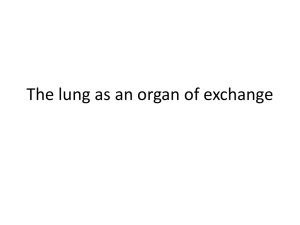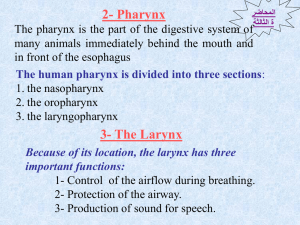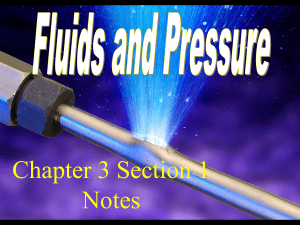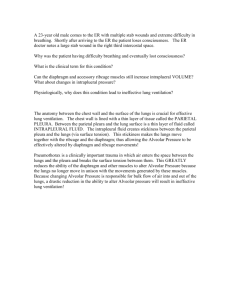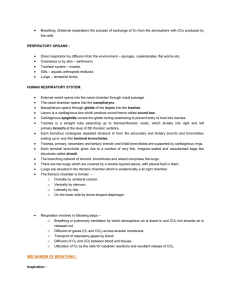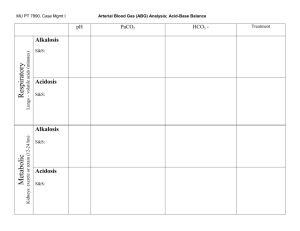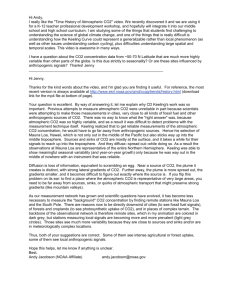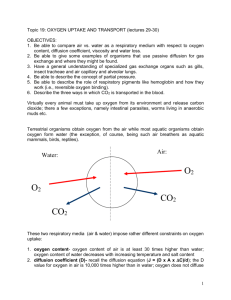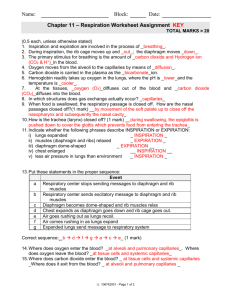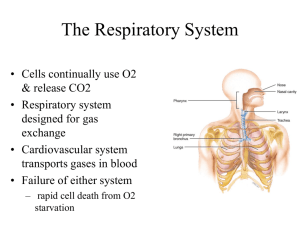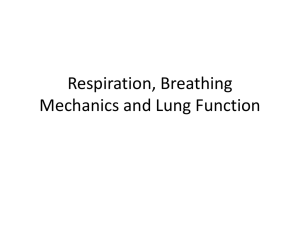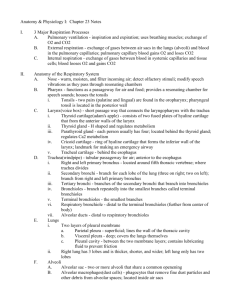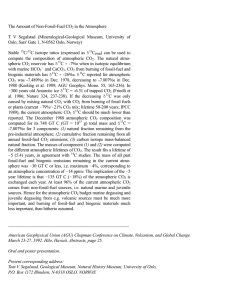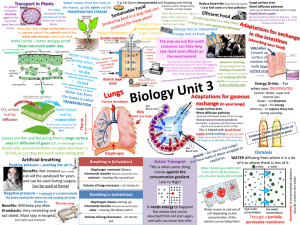Practice Questions: Exam II Cardiovascular & Respiratory Systems
advertisement
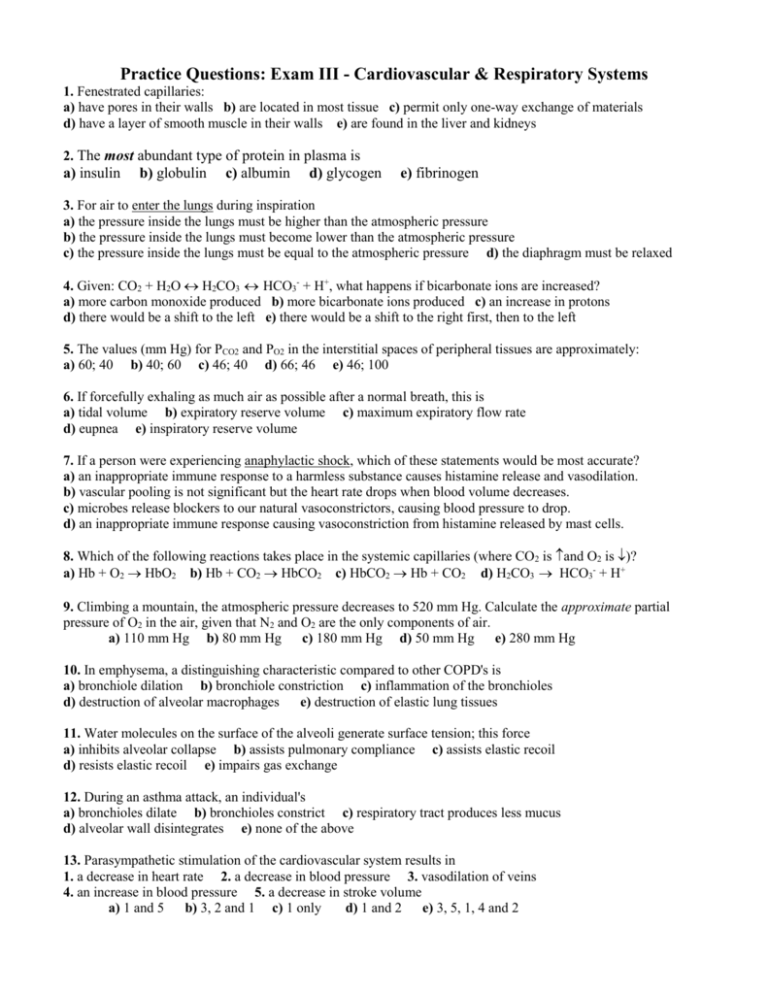
Practice Questions: Exam III - Cardiovascular & Respiratory Systems 1. Fenestrated capillaries: a) have pores in their walls b) are located in most tissue c) permit only one-way exchange of materials d) have a layer of smooth muscle in their walls e) are found in the liver and kidneys 2. The most abundant type of protein in plasma is a) insulin b) globulin c) albumin d) glycogen e) fibrinogen 3. For air to enter the lungs during inspiration a) the pressure inside the lungs must be higher than the atmospheric pressure b) the pressure inside the lungs must become lower than the atmospheric pressure c) the pressure inside the lungs must be equal to the atmospheric pressure d) the diaphragm must be relaxed 4. Given: CO2 + H2O H2CO3 HCO3- + H+, what happens if bicarbonate ions are increased? a) more carbon monoxide produced b) more bicarbonate ions produced c) an increase in protons d) there would be a shift to the left e) there would be a shift to the right first, then to the left 5. The values (mm Hg) for PCO2 and PO2 in the interstitial spaces of peripheral tissues are approximately: a) 60; 40 b) 40; 60 c) 46; 40 d) 66; 46 e) 46; 100 6. If forcefully exhaling as much air as possible after a normal breath, this is a) tidal volume b) expiratory reserve volume c) maximum expiratory flow rate d) eupnea e) inspiratory reserve volume 7. If a person were experiencing anaphylactic shock, which of these statements would be most accurate? a) an inappropriate immune response to a harmless substance causes histamine release and vasodilation. b) vascular pooling is not significant but the heart rate drops when blood volume decreases. c) microbes release blockers to our natural vasoconstrictors, causing blood pressure to drop. d) an inappropriate immune response causing vasoconstriction from histamine released by mast cells. 8. Which of the following reactions takes place in the systemic capillaries (where CO2 is and O2 is )? a) Hb + O2 HbO2 b) Hb + CO2 HbCO2 c) HbCO2 Hb + CO2 d) H2CO3 HCO3- + H+ 9. Climbing a mountain, the atmospheric pressure decreases to 520 mm Hg. Calculate the approximate partial pressure of O2 in the air, given that N2 and O2 are the only components of air. a) 110 mm Hg b) 80 mm Hg c) 180 mm Hg d) 50 mm Hg e) 280 mm Hg 10. In emphysema, a distinguishing characteristic compared to other COPD's is a) bronchiole dilation b) bronchiole constriction c) inflammation of the bronchioles d) destruction of alveolar macrophages e) destruction of elastic lung tissues 11. Water molecules on the surface of the alveoli generate surface tension; this force a) inhibits alveolar collapse b) assists pulmonary compliance c) assists elastic recoil d) resists elastic recoil e) impairs gas exchange 12. During an asthma attack, an individual's a) bronchioles dilate b) bronchioles constrict c) respiratory tract produces less mucus d) alveolar wall disintegrates e) none of the above 13. Parasympathetic stimulation of the cardiovascular system results in 1. a decrease in heart rate 2. a decrease in blood pressure 3. vasodilation of veins 4. an increase in blood pressure 5. a decrease in stroke volume a) 1 and 5 b) 3, 2 and 1 c) 1 only d) 1 and 2 e) 3, 5, 1, 4 and 2 Answer Key: 1. a 2. c 3. b 4. d 5. c 6. b 7. a 8. b 9. a 10.e 11.c 12. b 13.d



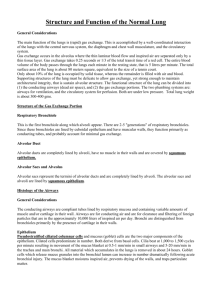
![The Breathing System Key Terms [PDF Document]](http://s3.studylib.net/store/data/008697551_1-df641dd95795d55944410476388f877c-300x300.png)
